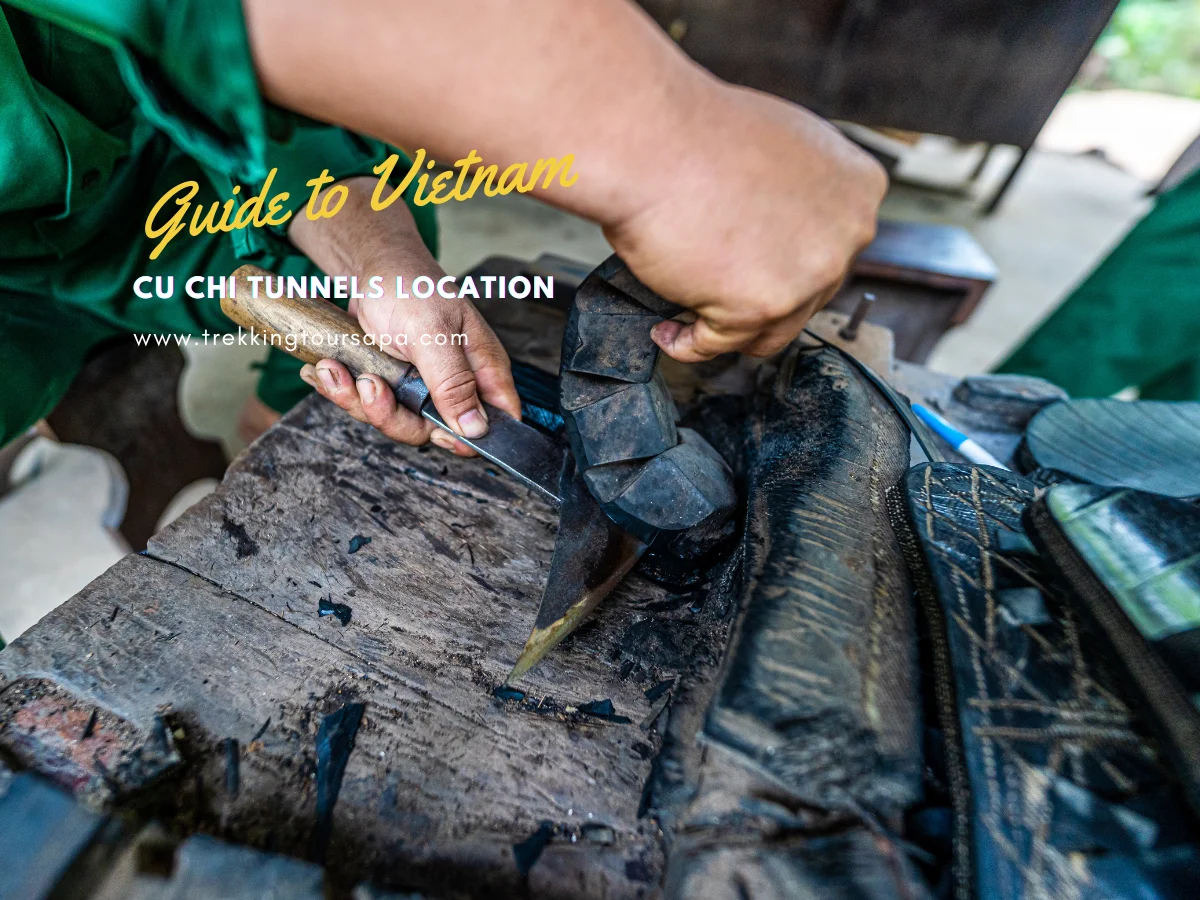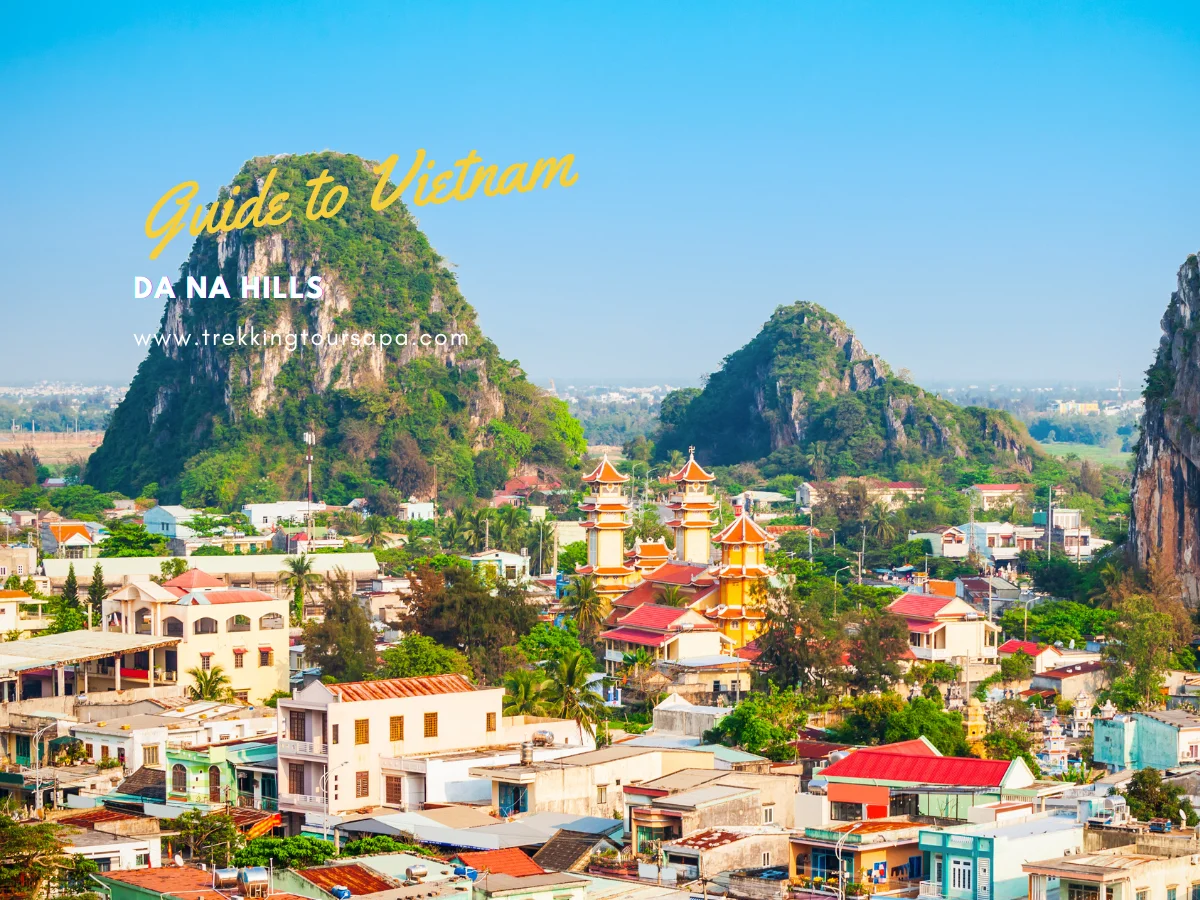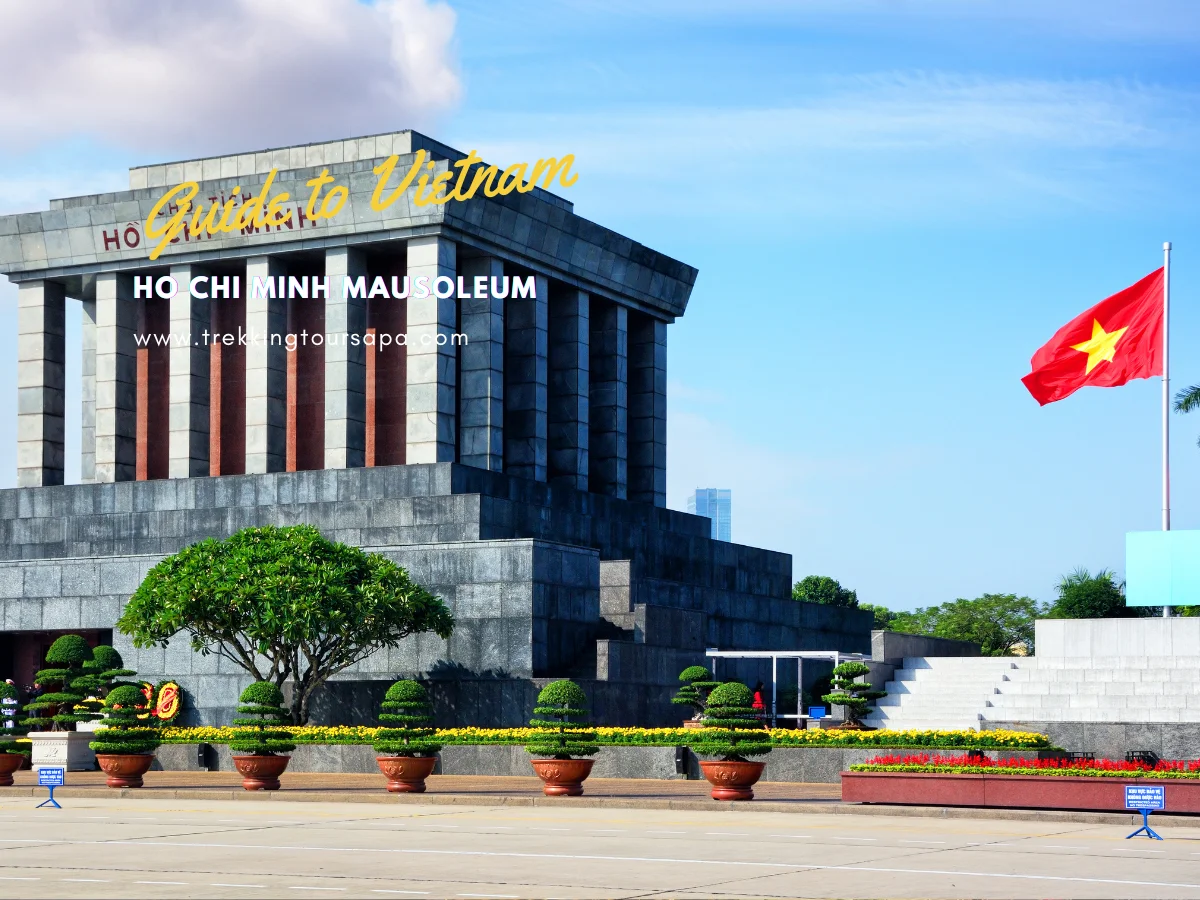Are you planning to ride the Ha Giang Loop in Vietnam but unsure of how to pronounce its name? Don’t worry, we’ve got you covered! In this article, we will provide you with the correct pronunciation of the Ha Giang Loop and guide you on how to articulate it properly. By perfecting your pronunciation, you’ll be able to communicate effectively with locals and enhance your overall experience. So, let’s dive in and master the pronunciation of this epic route!

Key Takeaways:
- The Ha Giang Loop in Vietnam offers a challenging yet rewarding experience for bikers.
- Pronunciation of Vietnamese names and places, such as Ha Giang, is commonly mispronounced.
- Riding the Ha Giang Loop is possible even with little or no previous biking experience.
- Consider your abilities, experience, and comfort level when deciding to ride the Ha Giang Loop.
- Riding with an experienced biker or joining a tour is recommended for added safety.
Table of Contents
ToggleWhy Pronunciation Matters for the Ha Giang Loop
Pronouncing the Ha Giang Loop correctly is not just about sounding more knowledgeable; it also helps you connect better with the locals and makes your journey more enjoyable. Vietnamese pronunciation can be challenging, but mastering it will enable you to communicate effectively and show respect for the local culture.

When you pronounce place names like “Ha Giang” accurately, it demonstrates that you’ve taken the time to learn and appreciate the language. Locals will appreciate your efforts and be more inclined to help you along your journey. It also opens doors for authentic experiences, as you’ll be able to engage in conversations with locals and get to know the culture on a deeper level.
To help you navigate the complexities of Vietnamese pronunciation, we’ve compiled some tips specific to the Ha Giang Loop. By following these suggestions, you’ll not only enhance your communication skills but also gain confidence in interacting with the locals:
- Take note of tone: Vietnamese is a tonal language, meaning that the meaning of a word can change depending on the tone used. Pay attention to the different tones when pronouncing syllables in “Ha Giang.”
- Practice vowel sounds: Vietnamese has unique vowel sounds that may not be present in your native language. Familiarize yourself with these sounds, particularly in the syllables of “Ha” and “Giang.”
- Master consonant sounds: Some consonant sounds in Vietnamese may be different from what you’re accustomed to. Focus on correctly pronouncing the “H” and “G” sounds in “Ha Giang.”
Sapa 1 Day Tours

- 1 day experience
- Moderate to challenging
- Cultural immersion & active adventure
- Rice fields, valleys & villages
- Private tours
- Vegan-friendly
Sapa 2 Day Tours

- 2 days 1 night experience
- Moderate to challenging
- Cultural immersion & active adventure
- Mountains, valleys, rice fields and villages
- Private tours
- Vegan-friendly
Sapa 3 Day Tours
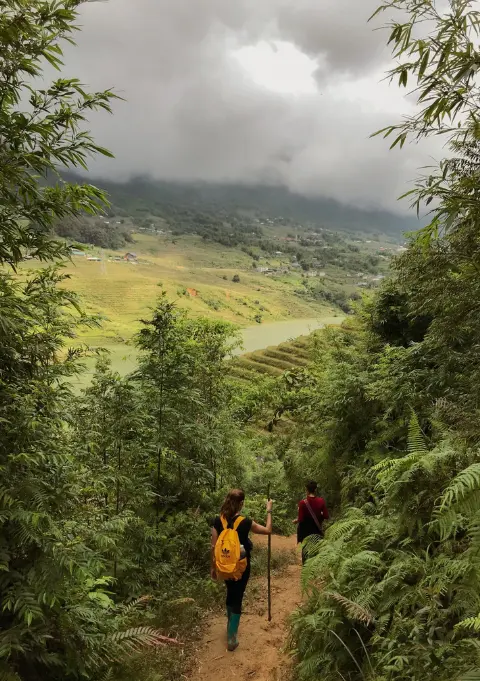
- 3 days 2 night experience
- Moderate to challenging
- Cultural immersion & active adventure
- Mountains, valley, rice fields & villages
- Private tours
- Vegan-friendly
Sapa 4 Day Tours
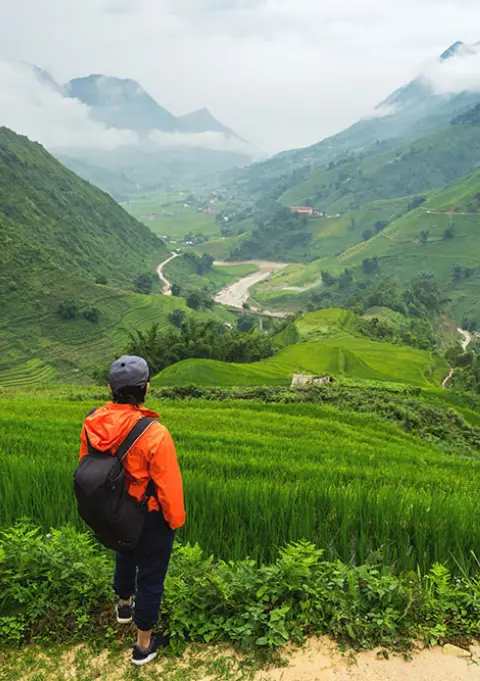
- 4 days 3 night experience
- Moderate to challenging
- Cultural immersion & active adventure
- Mountains, valleys, rice fields & villages
- Private tours – Less Touristic
- Vegan-friendly
Why Accurate Pronunciation Matters
“Accurate pronunciation opens doors for authentic experiences, as you’ll be able to engage in conversations with locals and get to know the culture on a deeper level.”
Remember, practice is key to improving your pronunciation skills. Don’t be afraid to ask locals for feedback or guidance along the way. They will appreciate your efforts to learn and will be happy to help you improve.
By taking the time to learn and practice the correct pronunciation of the Ha Giang Loop, you’ll not only enhance your own experience but also show respect for the local language and culture. So, embrace the challenge and enjoy your journey through this beautiful region of Vietnam!

| Benefits of Pronouncing the Ha Giang Loop Correctly: | Tips for Accurate Pronunciation: |
|---|---|
| Enhanced communication with locals | Pay attention to tones |
| Deeper cultural understanding | Practice vowel sounds |
| Authentic local experiences | Master consonant sounds |
Understanding Vietnamese Pronunciation
Vietnamese pronunciation can be challenging for English speakers, but with a little guidance, you’ll be able to master the pronunciation of the Ha Giang Loop. The Ha Giang Loop is a stunning motorbike journey in Vietnam that takes you through breathtaking landscapes and remote villages. To fully immerse yourself in this experience, it’s important to be able to pronounce the names of the places you’ll be visiting accurately.

When it comes to Vietnamese pronunciation, there are some key differences from English. The language has six different tones, which can completely change the meaning of a word. For example, the word “ma” can mean ghost, mother, which, or horse, depending on the tone used. It can seem overwhelming at first, but with practice, you’ll be able to recognize and produce the tones accurately.
To help you navigate the complexities of Vietnamese pronunciation, we’ve included a table below that highlights the six tones and provides examples of words with each tone. Take your time to study these examples and practice pronouncing them aloud. Remember, practice makes perfect, and as you become more familiar with the language, you’ll find it easier to pronounce the Ha Giang Loop and other Vietnamese names correctly.
| Tone | Example Word | English Meaning |
|---|---|---|
| Tone 1 | ma | ghost |
| Tone 2 | má | mother |
| Tone 3 | mà | which |
| Tone 4 | mạ | horse |
| Tone 5 | mã | tomb |
| Tone 6 | mả | tombstone |
Sapa 1 Day Tours

- 1 day experience
- Moderate to challenging
- Cultural immersion & active adventure
- Rice fields, valleys & villages
- Private tours
- Vegan-friendly
Sapa 2 Day Tours

- 2 days 1 night experience
- Moderate to challenging
- Cultural immersion & active adventure
- Mountains, valleys, rice fields and villages
- Private tours
- Vegan-friendly
Sapa 3 Day Tours

- 3 days 2 night experience
- Moderate to challenging
- Cultural immersion & active adventure
- Mountains, valley, rice fields & villages
- Private tours
- Vegan-friendly
Sapa 4 Day Tours

- 4 days 3 night experience
- Moderate to challenging
- Cultural immersion & active adventure
- Mountains, valleys, rice fields & villages
- Private tours – Less Touristic
- Vegan-friendly
As you can see, the tones play a crucial role in Vietnamese pronunciation, so be sure to pay close attention to them. Additionally, it can be helpful to listen to audio pronunciations of Vietnamese words, including the names of places along the Ha Giang Loop. Hearing the correct pronunciation will further enhance your understanding and ability to communicate effectively during your journey.
Correct Pronunciation of “Ha Giang”
Let’s start by tackling the pronunciation of “Ha Giang,” the starting point and highlight of the Ha Giang Loop journey. To pronounce “Ha Giang” correctly, we need to break it down into two syllables: “Ha” and “Giang.”
The first syllable, “Ha,” is pronounced like the English word “huh” but with a slightly shorter vowel sound. Remember to keep it brief and avoid elongating the sound.
Next, we have the second syllable, “Giang.” To pronounce this syllable, start with the “g” sound, similar to the “g” in “go.” Then, move your tongue to the “i” sound, like the “ee” in “bee.” Finally, ends with the “ang” sound, which rhymes with “bang.” Remember to keep the “g” sound soft, almost like a combination of “g” and “y.”
Now that we’ve covered the pronunciation of “Ha Giang,” let’s practice it together a few times. Repeat after me: Ha Giang, Ha Giang, Ha Giang. Great job!

Breaking Down the Pronunciation of “Ha Giang”
To pronounce “Ha Giang” correctly, it is essential to understand the individual sounds of each syllable. The first syllable, “Ha,” consists of two distinct sounds: “H” and “a.” The “H” sound is pronounced as a breathy, aspirated sound, similar to exhaling softly. It should not be confused with the sound “H” makes in English words like “house.” The “a” sound in “Ha” is pronounced like the short “a” sound in the English word “hat.”
The second syllable, “Giang,” is also made up of two sounds: “Gi” and “ang.” The “Gi” sound is unique to the Vietnamese language and can be challenging for non-native speakers. It is a combination of the English sounds “z” and “ee,” with a soft “z” sound at the beginning and a long “ee” sound at the end. The “ang” sound in “Giang” is pronounced as a nasal vowel, similar to the “a” sound in the English word “bang.”
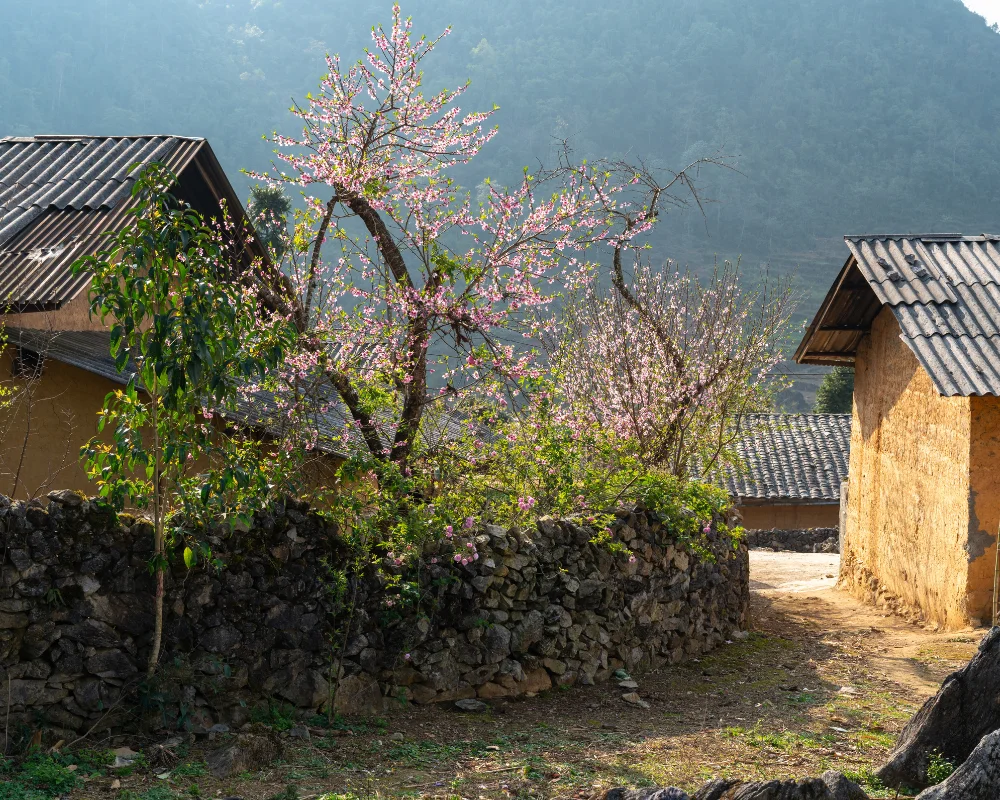
Putting it all together, the correct pronunciation of “Ha Giang” is “Hah Zee-ang.” It’s important to practice each syllable separately and then combine them gradually to achieve the correct pronunciation. Remember, don’t be discouraged by the initial difficulty; with practice, you’ll be able to master the pronunciation of “Ha Giang” and other Vietnamese names and places you may encounter along the Ha Giang Loop.
| English | Vietnamese | Pronunciation |
|---|---|---|
| Ha | Hà | Hah |
| Giang | Giàng | Zee-ang |
Pronouncing the “Ha” Sound
The “Ha” sound in “Ha Giang” requires specific attention to ensure accurate pronunciation. In Vietnamese, the “Ha” sound is pronounced with a slight aspiration, similar to the English “h” sound, but with a softer airflow. To pronounce it correctly, start by making the “h” sound as if you’re gently exhaling. Pay attention to the airflow and try to produce a subtle, airy sound. Practice saying “Ha” slowly and gradually increase your speed until you’re comfortable pronouncing it naturally.
Tips for Pronouncing the “Ha” Sound:
- Keep your mouth slightly open while making the “h” sound.
- Avoid forcefully exhaling or overemphasizing the airflow.
- Place your tongue lightly against the back of your top front teeth.
- Remember to relax your facial muscles and maintain a natural airflow.

By practicing these tips, you’ll be able to master the pronunciation of the “Ha” sound in “Ha Giang” and communicate more effectively during your journey on the Ha Giang Loop.
| Common Mispronunciation | Correct Pronunciation |
|---|---|
| Ha | hah (with a soft, aspirated “h” sound) |
| Ha Giang | hah gee-ang |
“Getting the pronunciation of Vietnamese names right can greatly enhance your travel experience. Locals appreciate the effort and it makes communication much easier. Take the time to practice and perfect the “Ha” sound in “Ha Giang” – you won’t regret it!”
Mastering the “Gi” Sound
The “Gi” sound in “Ha Giang” may be unfamiliar to English speakers, but with practice and guidance, you can master it. Pronouncing the “Gi” sound correctly is essential for accurately saying the name of this beautiful region in Vietnam. Let us guide you through the process.
The “Gi” sound is unique in Vietnamese, and it can be challenging to grasp at first. To produce the correct sound, start by pronouncing a “d” sound with the tip of your tongue against the roof of your mouth. Then, transition into a “z” sound, creating a soft buzzing sound as air passes between your tongue and teeth. The result should be a blended sound that is somewhere between a “d” and a “z”. Practice saying “Gi” slowly and gradually increase your speed as you become more comfortable.

Here’s a helpful table to guide you:
| Pronunciation Steps | Example |
|---|---|
| Start with a “d” sound | Die |
| Transition to a buzzing “z” sound | Zero |
| Blend the sounds together | “Gee” |
Remember, practice makes perfect! Take your time and focus on pronouncing the “Gi” sound accurately. With patience and persistence, you’ll soon be able to confidently say “Ha Giang” and impress locals with your pronunciation skills!
Putting It Together: “Ha Giang”

With the individual sounds mastered, let’s combine them to pronounce “Ha Giang” accurately. The correct pronunciation of “Ha Giang” can be broken down into two syllables: “Ha” and “Giang”.
The first syllable, “Ha”, starts with a quick exhale of air and is pronounced with a slight breathy sound, similar to the “h” in “hello”. It is followed by a short “ah” sound like the “a” in “father”. Together, they create the “Ha” sound, representing the first part of “Ha Giang”.
Next, we move on to the second syllable, “Giang”. It begins with a hard “g” sound, similar to the “g” in “go”. This sound is produced by pressing the back of your tongue against the soft part of your palate. Then, you glide into a long “i” sound, similar to the “ee” in “see”. Finally, you end with a short “a” sound, like the “and” in “hang”. When pronounced correctly, “Giang” completes the pronunciation of “Ha Giang”.
Example Pronunciation of “Ha Giang”
“Ha Giang” is pronounced as “hah gee-yang”.
| Word | Pronunciation |
|---|---|
| Ha | hah |
| Giang | gee-yang |

Now that you have mastered the individual sounds and the correct pronunciation of “Ha Giang”, you are one step closer to confidently communicating with locals and immersing yourself in the beauty of the Ha Giang Loop. Remember to practice pronouncing the words and syllables, and don’t be afraid to ask for help or clarification if needed. Before embarking on your journey, take the time to appreciate the intricacies of the Vietnamese language and its rich cultural significance. Happy travels!
A Guide to the Ha Giang Loop
As you embark on the Ha Giang Loop, it’s crucial to be well-prepared with knowledge about the route and its highlights. This scenic journey will take you through the stunning landscapes of the Ha Giang province in northern Vietnam, offering breathtaking views of mountains, valleys, and rice terraces.
The Ha Giang Loop is a 350-kilometer circuit that starts and ends in Ha Giang City. It typically takes around 3 to 4 days to complete, depending on your pace and the number of stops you make along the way. The route winds through remote villages, where you can immerse yourself in the local culture and interact with ethnic minority groups like the Hmong and Tay.

To fully enjoy the Ha Giang Loop, it’s important to plan your itinerary. Research the attractions and points of interest along the route, such as the Dong Van Plateau, Ma Pi Leng Pass, and Lung Cu Flag Tower. These iconic sites offer incredible photo opportunities and a chance to learn about the region’s rich history and traditions.
Before setting off on your adventure, make sure your motorcycle is in good condition and that you have the necessary riding gear, including a helmet, protective clothing, and sturdy footwear. It’s also recommended to check the weather forecast and pack accordingly, as the climate in the mountains can be unpredictable.
Tips for a Successful Journey:
- Ride with an experienced biker or join a tour for added safety and guidance.
- Stay hydrated and carry enough water with you, as there may not be many opportunities to refill along the way.
- Bring a map or download a GPS navigation app to help you navigate the route.
- Respect the local communities and their customs, and be mindful of the environment by properly disposing of your trash.
- Take breaks regularly to rest, stretch, and admire the stunning scenery.

Remember, pronunciation plays a significant role in effective communication on your journey through the Ha Giang Loop. Practice the correct pronunciation of names and places, such as Ha Giang, to show respect to the locals and enhance your cultural experience.
| Common Mispronunciations in Vietnamese: | Correct Pronunciation: |
|---|---|
| Ha Giang | hah gee-yang |
| Phu Quoc | foo kwoh |
| Hoi An | hoy ahn |
“Traveling the Ha Giang Loop is an unforgettable experience, filled with breathtaking landscapes and encounters with welcoming locals. From the dramatic mountain passes to the vibrant markets, every moment is an adventure. Just remember to take it slow, respect the culture, and enjoy the ride!” – Ha Giang Loop Traveler
Safety Considerations for Riding the Ha Giang Loop

While the Ha Giang Loop is an exciting adventure, it’s crucial to prioritize safety and make informed decisions. If you’re considering embarking on this epic journey, it’s important to assess your abilities and experience as a biker. While the route does pose some challenges with its mountainous terrain, including ascents, descents, and sharp corners, the majority of the roads are in excellent condition.
For those with little to no previous experience as a biker, riding the Ha Giang Loop is still possible. However, it’s recommended to ride with an experienced biker or join a tour for added safety and guidance. Riding with someone who is familiar with the route and can provide assistance in difficult situations can enhance your overall experience and mitigate potential risks.
Additionally, it’s important to note that the pronunciation of certain Vietnamese names and places, such as Ha Giang and Phu Quoc, are commonly mispronounced. While this may not directly impact your safety on the road, it’s essential to communicate effectively with locals, especially in case of any emergencies or situations where clear communication is necessary. Taking the time to learn and practice the correct pronunciation can help you connect with the local community and enhance your cultural experience during the Ha Giang Loop.
Sapa 1 Day Tours

- 1 day experience
- Moderate to challenging
- Cultural immersion & active adventure
- Rice fields, valleys & villages
- Private tours
- Vegan-friendly
Sapa 2 Day Tours

- 2 days 1 night experience
- Moderate to challenging
- Cultural immersion & active adventure
- Mountains, valleys, rice fields and villages
- Private tours
- Vegan-friendly
Sapa 3 Day Tours

- 3 days 2 night experience
- Moderate to challenging
- Cultural immersion & active adventure
- Mountains, valley, rice fields & villages
- Private tours
- Vegan-friendly
Sapa 4 Day Tours

- 4 days 3 night experience
- Moderate to challenging
- Cultural immersion & active adventure
- Mountains, valleys, rice fields & villages
- Private tours – Less Touristic
- Vegan-friendly
| Safety Considerations for Riding the Ha Giang Loop | |
|---|---|
| Assess your own abilities and experience | Make an honest evaluation of your biking skills and determine if you have the necessary experience to handle the challenges of the Ha Giang Loop. Consider your comfort level with mountainous terrains, sharp corners, and long rides. |
| Ride with an experienced biker or join a tour | Consider riding with someone who is experienced in navigating the Ha Giang Loop or joining a tour led by knowledgeable guides. Their expertise can provide valuable insights, guidance, and assistance along the way. |
| Practice the correct pronunciation | Take the time to learn and practice the correct pronunciation of Vietnamese names and places, such as Ha Giang. This can help facilitate clear communication with locals and enhance your cultural experience during the journey. |
Mispronunciations in Vietnamese: Ha Giang and Beyond

Mispronunciations of Vietnamese names are common among travelers, but by learning the proper pronunciation, you can show respect for the local culture. One such name is “Ha Giang,” which is often mispronounced. To ensure you pronounce it correctly, remember that the “Ha” sound is pronounced like the English word “huh,” with a short, sharp exhale.
The “Gi” sound in “Ha Giang” is slightly more complex. It is similar to the “zhee” sound in the English word “measure,” but with a softer, gentler touch. To pronounce it accurately, position your tongue against the roof of your mouth, just behind your top front teeth, and gently exhale while making the “zhee” sound.
Mastering the pronunciation of “Ha Giang” will not only help you communicate effectively with locals, but it will also enhance your overall experience. Remember, practicing the correct pronunciation will show your appreciation for the Vietnamese culture and create a positive connection with the people you encounter along the Ha Giang Loop and beyond.
| Common Mispronunciations | Correct Pronunciation |
|---|---|
| Ha Gi-ang | Ha Zhee-ang |
| Ha Gang | Ha Zhee-ang |
| Ha Gee-ang | Ha Zhee-ang |
Perfecting Your Pronunciation Skills

Practice makes perfect! Here are some exercises and techniques to help you refine your pronunciation skills for the Ha Giang Loop and other Vietnamese names and places you may encounter during your journey.
1. Break it down: Start by breaking words into syllables and practicing the pronunciation of each syllable separately. This will help you understand the phonetic elements and improve your overall pronunciation.
- Example: For “Ha Giang,” pronounce “Ha” and “Gi” individually before combining them.
2. Listen and repeat: Find audio resources or local speakers to listen to native pronunciations. Repeat after them to mimic their intonation and rhythm. This will train your ear and help you internalize the correct pronunciation.
“Listening to native speakers and mimicking their pronunciation is a great way to improve your own.”
3. Record and compare: Record yourself speaking the words or phrases you are practicing. Compare your pronunciation to that of native speakers, focusing on areas where you may be mispronouncing specific sounds or syllables.
Sapa 1 Day Tours

- 1 day experience
- Moderate to challenging
- Cultural immersion & active adventure
- Rice fields, valleys & villages
- Private tours
- Vegan-friendly
Sapa 2 Day Tours

- 2 days 1 night experience
- Moderate to challenging
- Cultural immersion & active adventure
- Mountains, valleys, rice fields and villages
- Private tours
- Vegan-friendly
Sapa 3 Day Tours

- 3 days 2 night experience
- Moderate to challenging
- Cultural immersion & active adventure
- Mountains, valley, rice fields & villages
- Private tours
- Vegan-friendly
Sapa 4 Day Tours

- 4 days 3 night experience
- Moderate to challenging
- Cultural immersion & active adventure
- Mountains, valleys, rice fields & villages
- Private tours – Less Touristic
- Vegan-friendly
| Mispronounced Sound | Correct Pronunciation |
|---|---|
| Ha | Ha: pronounced as “hah” (IPA: /hɑː/) |
| Gi | Gi: pronounce like “yi” but without the “y” sound (IPA: /ji/) |
4. Practice with a language partner: Find a language partner or join a language exchange program to practice your pronunciation. Engaging in conversations and receiving feedback from native speakers will help you identify and correct any pronunciation errors.
Remember, learning correct pronunciation takes time and practice. Be patient with yourself and embrace the challenge. By improving your pronunciation skills, you’ll enhance your communication abilities and fully immerse yourself in the Ha Giang Loop experience.
Resources for Pronunciation Assistance

Need additional assistance in perfecting your Ha Giang Loop pronunciation? Check out these helpful resources:
- Online Pronunciation Videos: There are numerous videos available online that provide step-by-step guidance on pronouncing the Ha Giang Loop. These videos often include visual cues and audio examples to help you grasp the correct pronunciation more easily. Some popular platforms to find these videos include YouTube and language-learning websites.
- Language Learning Apps: Many language learning apps offer pronunciation guides and language-specific courses. These apps often have interactive features that allow you to practice your pronunciation and receive feedback. Some apps even provide dedicated lessons for specific dialects and regional accents, which can help master the nuances of Vietnamese pronunciation.
- Audio Guides: If you prefer auditory learning, audio guides can be a valuable resource. These guides typically contain recordings of native speakers pronouncing words and phrases correctly. You can listen to these recordings repeatedly, imitate the pronunciation, and refine your accent. Look for audio guides specifically tailored to Vietnamese pronunciation.
Sapa 1 Day Tours

- 1 day experience
- Moderate to challenging
- Cultural immersion & active adventure
- Rice fields, valleys & villages
- Private tours
- Vegan-friendly
Sapa 2 Day Tours

- 2 days 1 night experience
- Moderate to challenging
- Cultural immersion & active adventure
- Mountains, valleys, rice fields and villages
- Private tours
- Vegan-friendly
Sapa 3 Day Tours

- 3 days 2 night experience
- Moderate to challenging
- Cultural immersion & active adventure
- Mountains, valley, rice fields & villages
- Private tours
- Vegan-friendly
Sapa 4 Day Tours

- 4 days 3 night experience
- Moderate to challenging
- Cultural immersion & active adventure
- Mountains, valleys, rice fields & villages
- Private tours – Less Touristic
- Vegan-friendly
Remember, practice makes perfect! So, make use of these resources, dedicate time to practice, and soon you’ll be confidently pronouncing the Ha Giang Loop like a pro!
| Resource | Description |
|---|---|
| Online Pronunciation Videos | Step-by-step guidance with visual and audio examples |
| Language Learning Apps | Pronunciation guides and interactive practice |
| Audio Guides | Recordings of native speakers pronouncing words and phrases |
Conclusion
Congratulations on taking the initiative to learn the proper pronunciation of the Ha Giang Loop! By mastering this skill, you are opening doors to deeper connections with the locals and creating unforgettable memories on your adventure.
If you’re planning to ride the Ha Giang Loop in Vietnam, you may be wondering if you’re skilled enough to handle the challenging roads. According to a personal account from a traveler, riding the Ha Giang Loop is possible even with little or no previous experience as a biker. However, it’s important to consider your own abilities, experience, and comfort level when making the decision. The route is mountainous and includes ascents, descents, and sharp corners, but the majority of the roads are in excellent condition. It’s recommended to ride with an experienced biker or join a tour for added safety.
Additionally, the pronunciation of some Vietnamese names and places, such as Ha Giang and Phu Quoc, are commonly mispronounced. By learning the correct pronunciation, you’ll not only improve your communication skills but also show respect for the local culture and enhance your overall experience. Remember, practice makes perfect, and with dedication, you’ll be able to pronounce these names confidently.
As you embark on your Ha Giang Loop journey, embrace the challenge of mastering the pronunciation. Immerse yourself in the vibrant Vietnamese culture, savor the breathtaking landscapes, and connect with the welcoming locals. Don’t miss out on this opportunity to create unforgettable memories while exploring one of the most scenic routes in Vietnam. Safe travels and enjoy every moment of your adventure!
Ha Giang Loop pronunciation FAQ
Can I ride the Ha Giang Loop with little or no biking experience?
Yes, it is possible to ride the Ha Giang Loop even with little or no previous experience as a biker. However, it is important to consider your own abilities, experience, and comfort level when making the decision. It is recommended to ride with an experienced biker or join a tour for added safety.
What is the condition of the roads on the Ha Giang Loop?
The majority of the roads on the Ha Giang Loop are in excellent condition. However, the route is mountainous and includes ascents, descents, and sharp corners. It is important to ride cautiously and be prepared for challenging terrain.
How do I pronounce “Ha Giang” correctly?
The correct pronunciation of “Ha Giang” is “Hah-Gyang.” The first syllable is pronounced with a short “a” sound, and the second syllable has a soft “g” followed by “yang.”
Are there any other Vietnamese names or places commonly mispronounced?
Yes, besides “Ha Giang,” there are other Vietnamese names and places that are commonly mispronounced. It is important to familiarize yourself with the correct pronunciation of these names to enhance your overall experience.
Sapa 1 Day Tours

- 1 day experience
- Moderate to challenging
- Cultural immersion & active adventure
- Rice fields, valleys & villages
- Private tours
- Vegan-friendly
Sapa 2 Day Tours

- 2 days 1 night experience
- Moderate to challenging
- Cultural immersion & active adventure
- Mountains, valleys, rice fields and villages
- Private tours
- Vegan-friendly
Sapa 3 Day Tours

- 3 days 2 night experience
- Moderate to challenging
- Cultural immersion & active adventure
- Mountains, valley, rice fields & villages
- Private tours
- Vegan-friendly
Sapa 4 Day Tours

- 4 days 3 night experience
- Moderate to challenging
- Cultural immersion & active adventure
- Mountains, valleys, rice fields & villages
- Private tours – Less Touristic
- Vegan-friendly



